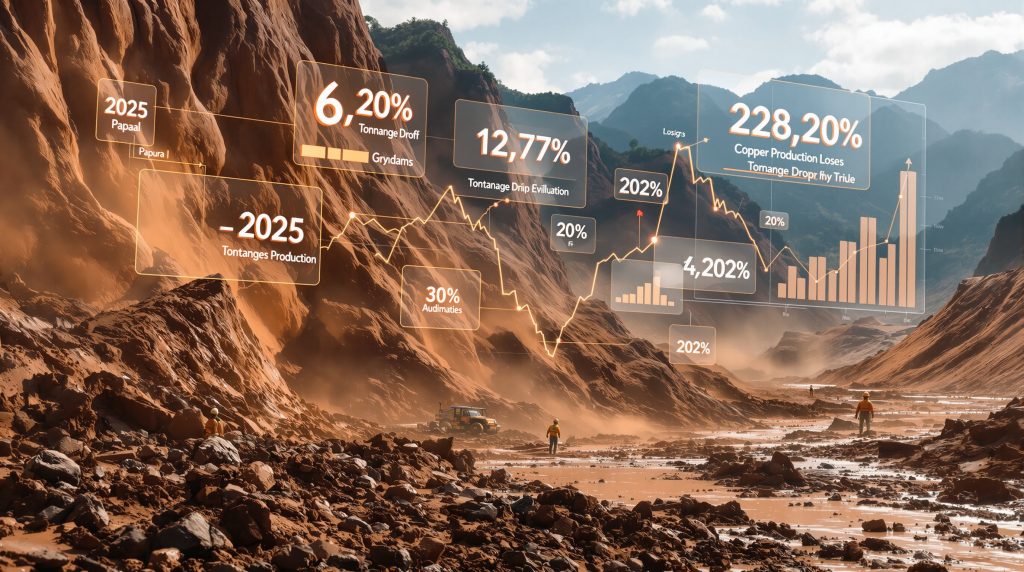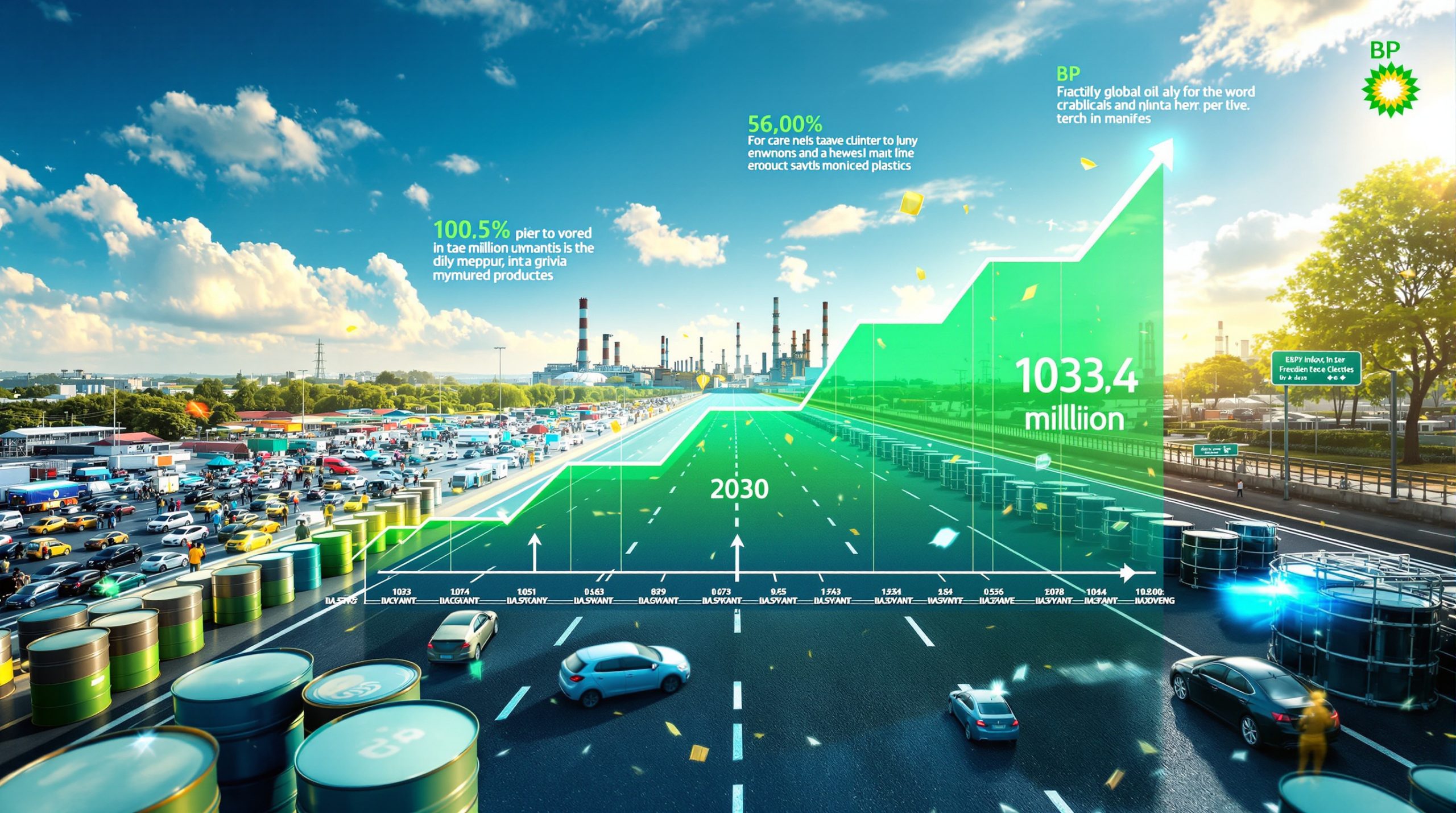What Happened at Indonesia's Grasberg Mine?
On September 8, 2025, Grasberg, Indonesia's flagship copper mine and the world's second-largest by output, suffered a severe operational setback. A sudden and catastrophic mud flow inundated underground operations, trapping workers and resulting in two fatalities. The disaster forced operator Freeport-McMoRan to declare force majeure, instantly suspending production and creating far-reaching repercussions across the global copper market.
The geological structure of Grasberg, characterized by steep, faulted terrain and complex groundwater systems, can elevate the risk of such geotechnical incidents. Heavy rainfall and the sheer scale of underground workings may contribute to destabilization, making strict geotechnical monitoring and emergency protocols essential. In this incident, despite safety systems in place, the rapid onset of the mud flow outpaced mitigation measures, highlighting the ongoing challenge of managing risk in deep and high-volume mining environments.
Historically, Grasberg has faced various operational incidents, but the September 2025 disaster stands out for its immediate and elongated impact on output and market sentiment.
Current Status of Mine Operations
Production remains severely limited post-incident. Freeport-McMoRan has confirmed that only 30-40% of the mine's annual output capacity remained unaffected and that this segment may gradually restart by mid-Q4 2025. However, the bulk of the operation—60-70% of capacity—faces an extended downtime, with meaningful restoration unlikely until well into 2026.
How Significant Is the Supply Disruption?
The scale of lost production from Grasberg is rare in recent mining history and exceeds typical annual allowances for unplanned global copper supply losses.
- In 2025, production losses are projected at 250,000 to 260,000 metric tons.
- In 2026, the loss estimate increases to 270,000 metric tons.
- The total expected global copper supply removed due to the incident: approximately 525,000 metric tons.
When placed in context, this disruption is considerable. Indonesia annually produces roughly 5% of the world's mined copper, and Grasberg alone contributes a majority share of this national output. Furthermore, the combined loss from Grasberg surpasses other recent single-mine setbacks. For example, the cumulative effect of the Grasberg, Kamoa-Kakula, and El Teniente disruptions in 2025 is unparalleled in the last decade, straining an industry already grappling with declining ore grades and developmental delays at new mines.
What Does This Mean for Global Copper Market Balance?
The incident has dramatically flipped the copper market from surplus to deficit for the coming year. Previous forecasts in early 2025 projected a manageable global surplus due to incremental growth from Latin American and North American mines.
| Year | Previous Market Balance | Post-Grasberg Balance | Change |
|---|---|---|---|
| 2025 | 105,000-ton surplus | 55,500-ton deficit | -160,500 tons |
| 2026 | Small surplus | Reduced surplus | Moderately lower |
Global copper mine production is now forecast to grow by only 0.2% year-over-year in 2025, sharply down from previous estimates of 0.8%. In 2026, growth is expected at 1.9% instead of the prior 2.2% projection.
Regional impacts are most pronounced in Asia, where processors and fabricators are highly dependent on Indonesian concentrate. The market's shift to deficit will likely increase regional price volatility and drive bidding wars for available spot shipments.
When Will Grasberg Return to Full Production?
Restoring Grasberg to its former operational capacity demands a phased, technically complex recovery process.
- Q4 2025: Limited production resumes in unaffected sectors representing about 30-40% of capacity. Even this will likely occur late in the quarter and at well below optimum rates.
- First Half 2026: Technical recovery and infrastructure rebuilding begin in affected sectors, although full restoration will depend on regulatory clearances and detailed safety evaluations.
- 2027 and Beyond: A return to historic production levels may not be achievable until 2027, depending on engineering progress, labor availability, and permitting for both mining and processing operations.
Challenges to Recovery
- Underground Damage: The mud flow damaged underground haulage systems, monitoring equipment, and ventilation controls, which require substantial re-engineering.
- Safety Reviews: Authorities will demand rigorous third-party verification of new safety and risk-control systems.
- Environmental Remediation: Slurry-disposal, drainage stabilization, and ecosystem restoration are prerequisites for any restart.
- Regulatory Approvals: Indonesian mining and environmental agencies will review restart plans, potentially causing further delays.
How Will Copper Prices Respond?
The supply squeeze has ignited bullish sentiment, sharply altering sentiment and forecasts across the commodities sector. As of late September 2025, benchmark three-month copper futures on the London Metal Exchange were $10,277.50 per ton.
| Period | Previous Forecast | Revised Projection | % Increase |
|---|---|---|---|
| Dec 2025 | $9,700/ton | $10,200–$10,500/ton | 5.2-8.2% |
| 2027 | N/A | $10,750/ton | N/A (bullish) |
Several factors drive this price response:
- Global copper stockpiles at exchange warehouses have been falling for several quarters, leaving little cushion for a major supply shock.
- Disruption coincides with output challenges at other major sites: Kamoa-Kakula (Congo) and El Teniente (Chile) both experienced interruptions in 2025.
- The market has limited flexibility to rapidly substitute or expand output, especially as deeper, lower-grade mines (including Grasberg) face escalating extraction costs.
Historically, similar disruptions have led to sharp, short-term price rallies, followed by a prolonged period of elevated pricing as inventories are replenished. Various copper price predictors have adjusted their forecasts upward in light of these developments.
What Are the Broader Industry Implications?
The supply shock at Grasberg reverberates throughout the copper value chain, affecting not just miners but also downstream manufacturers, project developers, and commodities investors.
- Producer Impact: Freeport-McMoRan faces sharp output and revenue reduction, highlighting earnings and balance-sheet volatility faced by major diversified miners during mine-specific crises.
- Competitor Opportunities: Rival miners may benefit from the price surge, but many are also grappling with their own technical and regulatory hurdles.
- Juniors and Developers: The market context may improve the economics of marginal, development-stage copper projects, attracting renewed exploration and private equity interest.
- Copper-Dependent Industries: Engineering, procurement, and construction (EPC) contractors could see spikes in input costs for renewable projects and EV production, putting pressure on margins and delivery schedules.
Multi-national supply chain managers are already considering more robust hedging strategies and alternative sourcing to shield themselves from future shocks.
What Does This Mean for Future Copper Supply?
The Grasberg incident amplifies structural issues and signals underlying fragilities within global copper supply forecast:
- Aging Infrastructure: Many world-class producers—Grasberg included—face end-of-life challenges, requiring extensive upgrades and risk of unplanned outages.
- Declining Ore Grades: Modern mines often must process more tons of rock for each ton of saleable copper, reducing efficiency and increasing costs.
- Deeper Operations: As surface and shallow deposits are exhausted, more mining shifts below the water table, requiring advanced dewatering and geotechnical management.
- Regulatory Demands: Social license and environmental criteria have become more stringent worldwide, slowing project approval timelines.
- Geopolitical Risks: Trade and export bans, resource nationalism, and regional conflict add another layer of supply chain complexity.
These macro trends, compounded by high-profile disruptions, make the case for increased stake in:
- Development of lower-grade and previously marginal deposits
- Enhanced recycling initiatives
- Innovative extraction technologies (such as heap leaching)
- Materials-substitution research, though with technical and economic limitations
How Does This Fit Into the Broader Copper Market Narrative?
Copper remains indispensable in the global energy transition, underscored by its use in electric vehicles (which require up to four times the copper of internal combustion cars), renewable energy infrastructure, and grid resilience technologies. The timing of the Grasberg supply loss is particularly challenging:
- Surging Demand: Electrification, renewable energy, and digital infrastructure all hinge on robust copper supply. Rising copper demand continues to outpace new production capacity.
- Limited Substitution: While some wires and conductors can switch to aluminum, many industrial and automotive uses require copper's superior electrical and corrosion-resistant properties.
- Project Pipeline Constraints: Few Tier-1 copper projects are scheduled to come online before 2027–2030, leaving the market exposed to additional shocks.
- Innovation & Efficiency: Higher costs invite investment in new extraction techniques and reduction of copper intensity in end products.
While the immediate effect is tightness and price appreciation, the longer arc of the market will be shaped by how responsive miners and end-users are to higher price signals, regulatory incentives, and technological breakthroughs. According to a recent Reuters analysis, this disruption may significantly reshape medium-term market dynamics.
FAQ: Key Questions About the Copper Market Impact
How does the Grasberg disruption compare to other recent copper supply issues?
The Grasberg incident marks one of the most substantial losses from a single mine in recent memory, surpassing the combined effect of supply shocks seen at Kamoa-Kakula and El Teniente in 2025. It moves the entire market into an unexpected deficit, an uncommon event for a commodity as globally distributed as copper.
Could this disruption accelerate copper alternatives development?
While there are niche areas where substitution is viable, copper's unparalleled conductivity and resistance remain unmatched for many critical applications. The primary market response is more likely to be efficiency-driven innovation within existing copper-intensive industries rather than a wholesale materials switch.
What indicators should investors watch for recovery timelines?
Key metrics include official Freeport-McMoRan quarterly updates, Indonesian mining regulatory disclosures, real-time concentrate shipment volumes from Grasberg, and satellite imagery of surface and underground remediation progress. Revisions to 2026 production guidance will be particularly telling.
How does this affect copper exploration and project investments?
The sharp shift to deficit increases capital flows into underexplored copper belts, accelerates feasibility work at previously marginal projects, and stimulates mergers, acquisitions, and partnerships targeting supply diversification—especially in politically stable regions. Investors are closely monitoring both US copper production overview and potential copper and uranium investments as alternative supply sources.
Further Exploration:
For more insights into the shifting landscape, consult reputable analysis such as the Economic Times article on copper investments, which offers additional perspective on this evolving situation.
Disclaimer: The information in this article is based on currently available sources as of September 2025, including reports by Reuters and Goldman Sachs. Markets are subject to rapid change, and future projections remain speculative and should not be used as the sole basis for investment decisions.
Want to Stay Ahead of Major Mineral Discoveries?
Discover why significant mineral finds like those at Grasberg can dramatically shift markets by exploring Discovery Alert's dedicated discoveries page, where their proprietary Discovery IQ model delivers real-time notifications on significant ASX mineral announcements, giving you a crucial market advantage before others react.




